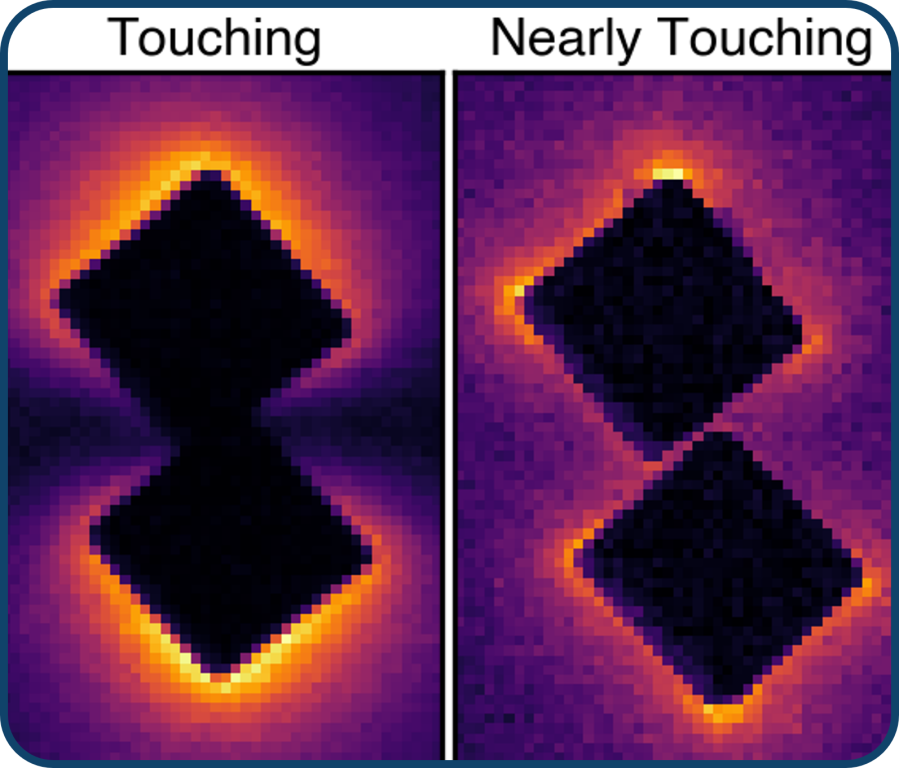
Fluorine-doped indium oxide nanoparticles where faces either touch (left) or nearly touch right) resulting in colossal differences in the optical response
Scientific Achievement
A cutting-edge combination of theory and experiment produces answers determines the gap-morphology dependence of infrared plasmonic nanoparticles.
Significance and Impact
Long standing questions of whether transitions are singular (discontinuous at zero gap) or non-singular (continuous at zero gap) are answered by experiment and theory.
Research Details
- Monochromated electron energy-loss spectroscopy (EELS) is used to map plasmon resonances in nanoparticle systems to unveil local response.
- Modeling electromagnetic fields shows how singular and nonsingular transitions are moderated by gap morphology (point, line, face). Theory establishes a comprehensive framework for infrared nanoplasmonic particle interactions
Y. Wu et al., ACS Nano 18 (2024). DOI:10.1021/acsnano.4c02644
Work performed at the Center for Nanophase Materials Sciences


